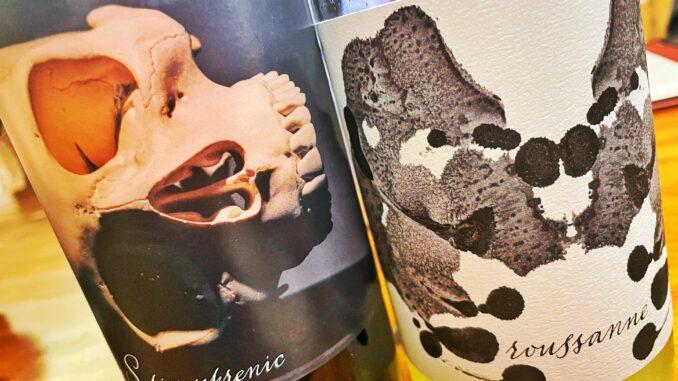
Photo credit: Jim Skogsberg.
I find that wine tasting is a very cerebral experience. Even before the taste, my mind seems to light up as I watch it being poured from the bottle and, soon thereafter I’m taking in projections of color and viscosity in the glass. In response, my other senses start to fire up, too… first my eyes focus in the glass with anticipation of the aromas and flavors that will enter my nose and mouth. If I were asked to describe the wine as I tasted it, which I have often been asked to do, the process has uncanny similarity – I imagine – to what it would be like for a doctor to give me a Rorschach test and asking me to describe the image.
Being a wine taster and someone that likes to experience lots of wines, my fascination with Slate Theory Winery comes from words on their website say:
“The mind is the center of all experience (VT – works for wine tasting, too). It is through the lens of the mind that all is brought into focus. One must understand this fact to begin to truly appreciate how widely varied one experience can be between two individuals. The Rorschach test offers a prime example of this synopsis. In a single image, one viewer may see a pleasant scene wIth two ducks in a pond, while a second viewer may report seeing a darker image of a spider waiting in its web for prey…. this phenomenon extends to each of the five senses.” Applied to a visit to Slate Theory Winery and to tasting their wines, these words speak volumes about the complex experience that will occupy the folds of your mind during a wine tasting. It might be your experience or mine, we may even be tasting the same wines at the same time, but our experiences are very likely NOT going to be the same, nor should they. Why? It is usually comes from our different perspectives and experience.
Join me as I take you on the short ”image tour” of Slate Theory Winery with photos taken by my long time friend and photographer, Jim Skogsberg. Let’s see how the experience evolves in your mind.
The moment you enter the front gate, the first thing around you is their show vineyard. This vineyard is a legacy of a winery past. But still, it welcomes to you to Slate Theory Winery.

Entering the winery tasting room, you can stop and have a taste, a glass or a bottle of wine. It is an inviting place. As you walk through the door, it speaks to you… ”Relax, damn it, relax! Experience what I have to offer you.”

Or, you can descend well below ground level into a cave where you can enjoy wine surrounded by the cool, welcoming walls of concrete and greenery.



The next time you stop by Slate Theory for a wine tasting, think about this: your sensory receptors (eyes, nose, tongue, and yes, ears) are constantly collecting information. This is ultimately how you interpret the information streaming into the brain from the glass of wine; through your senses into your mind. Ultimately, it enables you to describe the wine you are tasting, but only if you are in tune with your senses and ready to perceive.
Perception refers to the way sensory information is organized, interpreted, and consciously experienced. Next time you are tasting a wine, think about this… Perception involves both bottom-up and top-down processing. Bottom-up processing refers to the fact that perceptions are built from sensory input – simply what you experience through your senses. In many regards, most people perceive wine from the bottom up. On the other hand, how you interpret those sensations is influenced by your available knowledge, your past experiences, and your thoughts. This is called top-down processing. The more wine tasting you do, the more wines you experience, and the more knowledge on tasting wine you acquire, the more you become a top-down taster.
Out in the back, behind the Slate Theory Winery, you can look into the future. This is where they are expanding the estate vineyard and planting new varieties of grapevines for wines that you have not yet perceived, but undoubtedly will in a few years. Inside the winery, they are adding space in tanks for these wines.


In the meantime, just stop by and pick your tasting venue. Relax and be open to the experience and your perceptions (either bottom up or top down). Taste some wine and enjoy the both the wine and the moment at Slate Theory Winery.

My Rorschach test – 2020 Slate Theory Roussanne – This Bright Roussanne possesses aromas of honey, toasted almond, ripe peaches and vanilla, followed by peach pit, dried apricot, mandarin orange, lemon zest and warm honey are present on the palate. Medium plus acid up the sides of the tongue creates a smooth, mouthwatering effect.

What do you see in the Rorschach test on the Roussanne label?